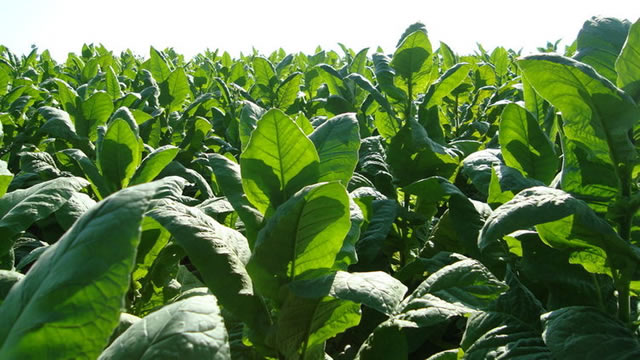Considerations in tobacco grading

In grading the tobacco leaf, the plant position (leaf size and shape), degree of damage, colour, maturity and surface texture are what is considered. Farmers are urged to grade as well as keep reapings from different fields separately unless the lands are of the same soil type and planted at the same time. Grade reapings from different lands separately since uniformity of soil, ploughing and tilth preparation are some of the factors that affect grading.
Different varieties of tobacco should be kept separately for the obvious reason. They will produce distinctly different leaves and yet grading is all about sorting out leaves of similar characteristics into uniform lots in terms of colour groups, style qualities and length for sale. Where possible tobacco cured in different curing systems should be kept separately.
Barns, unless very efficient, influence grades and different barns sometimes do not always produce the same grades. The leaf that is used to tie the leaves together should also be the same as the leaves that form the rest of the bale, the only exception here being that short leaves in the grade can be used for tying and thereby maintaining uniformity. Whilst it is natural to pay more attention to higher quality grades, due attention also needs to be given to lower quality grades since this end of the market has larger price variability especially between ripe and less mature styles. The Tobacco Industry and Marketing Board advises that when you hold back tobacco that comes out of the barns with green on it from going to the market, do a light re-grading of running green leaves and those which are fixed.
The sizes of the butts should be between 25 mm and 28 mm as butts outside this range may be rejected if they are either above or below this range. Farmers should also make sure that they do not mix broken long leaf with short leaf as well as ensure that bent over stems are not included in the butts as this practice affects the tipping and threshing properties of a grade over and above increasing the probability of rejection, spoiling presentation and lowering the commercial value of a bale.
The grading of strips and scrap is considerably much easier since tolerances are greater with strips and scrap usually graded into light, dark and greens.Strips are long pieces of leaf that have been threshed or cut away from the stem while scrap is leaf that is broken into small pieces. Whilst strips should be of the same plant position but can contain bordering colours and qualities, scrap of the same appearance from cutters, lugs and primings can be blended together, the only separation being scrap from thin leaf grades and bodied leaf and tips should be kept separate.
Two-thirds of the mid-rib and all signs of barn rot, stem rot or mould should be removed from strips. One however ought to make sure that neither strip nor scrap contains pieces of loose midribs, foreign matter and mould through a process of screening and ensuring that they are not taken to the market.
Tobacco farmers are reminded that graded tobacco leaves less than 18cm in length may be baled as loose leaf as very short low stalk types may be difficult to straight lay hence the need for tobacco farmers to put every effort in presenting the tobacco as neatly as possible.
A farmer may present on the auction or contract floor a bale containing two grades of tobacco, something known as split bale on condition that only two grades are put in a split bale and grades are bordering with regards to group, quality and style and a sheet of the normal bale inner wrap separates the grades in the bale and not any other material. Split bales should be declared by attaching a bale ticket on the end of the bale adjacent to the bale number ticket and marked “Split”.
For any additional information please contact TIMB on telephone numbers 0772145166 /9 or 0279-22082 /21982 or 025-3439 or 067-24268 /29246 or 0277-2700 or 064-7280 or 0271-6772 or E-mail: [email protected] or visit our website on www.timb.co.zw











Comments